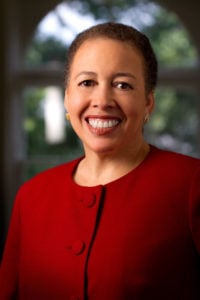
The Graduate School of Education (GSE) hosted a discussion on Wednesday with Haas Distinguished Visitor Dr. Beverly Daniel Tatum that addressed how the rapid diversification of American demographics has impacted race relations. Tatum also discussed her life and legacy.
As part of the Race, Inequality and Language in Education speaker series, Charles E. Ducommun Professor in the Graduate School of Education Arnetha F. Ball moderated the discussion.
Tatum emphasized the dramatic shifts in demographics of the United States population in recent years, explaining that, “In 1954, 90 percent of the U.S. population was white… Today, in the year 2014, K-12[th grade], the student population was 50 percent or slightly more than that of kids of color.”
However, Tatum claimed that race relations have shown little improvement in the two decades since she published her renowned book, “’Why Are All The Black Kids Sitting Together in the Cafeteria?’ And Other Conversations About Race.” Neighborhood and school segregation, economic disparities and mass incarceration have continued to cause dramatic inequality, Tatum said.
Tatum also talked about the updates she made to the 20th-year anniversary edition of her book in light of national changes in demography and policy; she rewrote chapters on affirmative action and on the Middle Eastern and Muslim identity to reflect the U.S.’s dynamic population.
“We’re in a more backward moment than a forward moment,” Tatum said. “However, I do believe that we can move forward again, but not without concerted effort.”
The speaker also discussed her experience as president of the historically black women’s college, Spelman College.
Her interest in the job was heightened by an admissions brochure, Tatum said. On the back, the brochure told readers, “This is your heritage and your calling.”
Several Stanford attendees were struck by this anecdote. Julian Samuels ’20 said that the brochure applied beyond heritage.
“I thought it was interesting that she connected to it so strongly even though the brochure was marketed to prospective undergraduates,” Samuels said. “I compared it to the messages Stanford sends about belonging, which come from a completely different angle.”
Another audience member, Larkin Willis ’17 from the GSE, introduced Tatum’s leadership and praised the lasting legacy of her teaching.
“Dr. Beverly’s Tatum’s leadership on racial equity in schools has a profound impact that extends beyond her immediate influence,” Willis said. “It’s the spirit of Dr. Tatum’s leadership that established a lasting school atmosphere that continually reaches out to the next generation.”
Contact Lark Wang at larkw ‘at’ stanford.edu.
